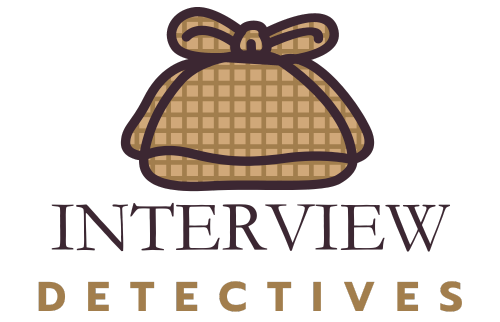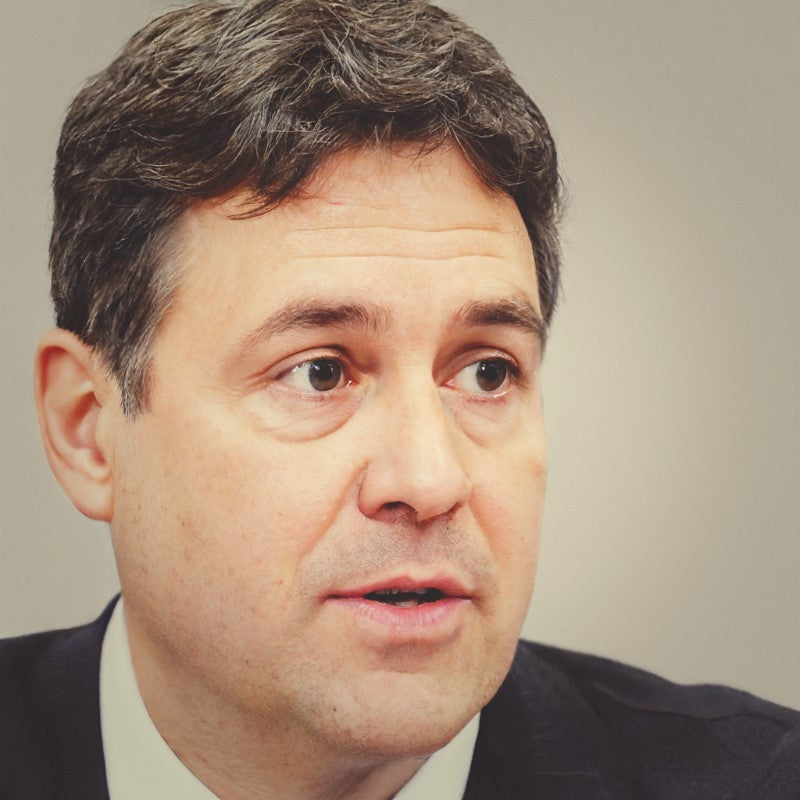Getting ready for an interview as a fashion designer? That's an exciting step in your journey! As a potential fashion designer, you're not just looking at a fascinating and dynamic career, but also a very rewarding one. Top fashion designers in the US can take home around $130,000 annually, while in the UK, the upper-end salary is about £75,000 a year.
Now, to secure that dream job, it's crucial to ace the interview. In this article, we'll explore a variety of tips and techniques to help you perform at your best during your fashion designer interview.
👠Fashion Designer Specific Interview Tips
Interviewing for a fashion designer role is not quite like any other job interview. You need to showcase your creativity, industry knowledge, and passion for fashion while demonstrating your practical skills and ability to work in a team.
Remember, it's not just about your design skills but also your ability to understand the business and the customer. Talk about your inspirations, favorite designers, and trends that excite you. Discuss how you've navigated design challenges and how you approach teamwork and communication.
⭐ How Best to Structure Answers: The B-STAR Method
When it comes to answering interview questions, structure is your best friend. Mike Jacobsen's B-STAR method (Belief, Situation, Task, Action, Result) provides a simple yet effective framework to deliver impactful responses.
Start with your Belief - your thoughts and feelings about the subject matter. Then move on to the Situation, describing the context of a scenario related to the question. Next, outline your Task - your role and responsibilities within the scenario. After that, detail your Action - the steps you took to address the task at hand. Conclude with the Result - the outcome of your efforts, ideally backed by quantifiable data.
🚫 What NOT to Do in an Interview
While it's important to know what to do in an interview, it's equally important to know what not to do. Avoid negative language and don't criticize previous employers or colleagues. Stay professional and focused, even if the interview setting is casual. And remember, overconfidence can come across as arrogance, which is never appealing. Keep your responses balanced and genuine, and don't forget to show that you're a team player.
📕 Featured Guide: Interview Success
If you're seeking an in-depth preparation resource, check out our featured guide: "Interview Success: How to Answer Fashion Designer Questions (With Over 100 Sample Answers)". This 100+ page guide is packed with valuable insights and expert advice, equipping you to handle any question with confidence. Plus, it's available for instant download! Don't miss out on this fantastic resource – click here to get your copy today.
Now that you're equipped with these tips and techniques, let's delve into the heart of any interview - the questions. In the following section, we're going to take a close look at some common fashion designer interview questions and provide you with sample answers to ensure you're fully prepared to shine on the big day.
Fashion Designer Interview Questions & Answers
"Why did you choose to become a Fashion Designer?"
When you're asked about your reasons for choosing this career path, it's an opportunity to demonstrate your passion for fashion design and how it aligns with your personal and professional goals. This question is designed to assess your motivation and commitment to the industry. It's important to articulate your genuine interest in fashion design, your creative vision, and how you see yourself contributing to the field. Avoid giving generic answers or focusing solely on the glamorous aspects of the job. Instead, highlight your understanding of the hard work and dedication required in this profession.
Answer 1
I chose to become a Fashion Designer because of my lifelong passion for art, design, and storytelling. From a young age, I was always drawn to the world of fashion, not just because of the glamour and creativity, but also because of the powerful way it can express individuality and culture.
My journey towards becoming a fashion designer started in high school, where I took art and design classes and began experimenting with creating my own clothes. I loved the process of taking a concept or idea and translating it into a tangible, wearable piece of art. This led me to pursue a degree in Fashion Design, where I was able to deepen my technical skills and understanding of the fashion industry.
However, my decision to become a Fashion Designer was not just about my love for design. I also recognized the potential for fashion to make a positive impact. I was particularly inspired by designers who use their platform to promote sustainability, inclusivity, and social change. This motivated me to focus on sustainable design in my work and to use my designs to challenge conventional beauty standards.
For example, in my previous role as a designer at a sustainable fashion brand, I led a project to create a size-inclusive collection made from recycled materials. This project was not only successful in terms of sales, but also received positive feedback from customers who appreciated our commitment to inclusivity and sustainability.
In terms of my future goals, I aspire to create a fashion line that combines innovative design with sustainability and inclusivity. I believe that as a Fashion Designer, I have a responsibility to not only create beautiful clothes but also to contribute to a more sustainable and inclusive fashion industry.
So, in essence, I chose to become a Fashion Designer because it allows me to combine my passion for design with my desire to make a positive impact. It's a challenging and dynamic field that constantly pushes me to grow and evolve as a designer. And despite the hard work and pressure, there's nothing more rewarding than seeing someone wearing and feeling good in a design that I've created.
"What is your design process?"
Discussing your design process allows you to showcase your creativity, problem-solving skills, and attention to detail. This question is aimed at understanding how you approach a design project from conception to completion. It's crucial to explain your thought process, the steps you take, and how you handle challenges along the way. Avoid being vague or skipping important steps in your process. Instead, provide a comprehensive overview that demonstrates your ability to manage a project effectively and deliver a successful final product.
Answer 1
My design process is a blend of creativity, technical skills, and strategic thinking. It's a multi-step process that begins with inspiration and ends with a finished product, but it's also flexible and adaptable to the specific needs of each project.
The first step in my process is gathering inspiration. This could come from a variety of sources, such as art, nature, culture, or even a particular fabric or color. I like to immerse myself in the theme or concept I'm exploring, collecting images, sketching ideas, and creating mood boards. This stage is all about exploration and allowing my creativity to flow freely.
Once I have a clear concept, I move on to the sketching phase. I start with rough sketches to get my ideas down on paper, then refine these into more detailed drawings. I also consider the practical aspects of the design, such as the choice of fabric, the construction techniques, and the fit of the garment.
Next, I create technical drawings and specifications for each design. This includes detailed measurements, construction details, and notes on the fabric and trimmings. These technical drawings are crucial for communicating my design intent to the pattern makers and seamstresses.
After the technical drawings are complete, I work with the pattern makers to create a prototype of each design. This is a crucial step in the process, as it allows me to see how the design translates from paper to fabric. I usually have a fitting session with a model to assess the fit and silhouette of the garment, and make any necessary adjustments to the pattern.
Once the prototype is finalized, I oversee the production of the final garment. This involves working closely with the production team to ensure that the design is executed to a high standard and that the finished product aligns with my original vision.
Finally, I review the finished garments and prepare them for presentation or sale. This could involve organizing a photoshoot, preparing for a fashion show, or presenting the collection to buyers or clients.
Throughout this process, I'm constantly problem-solving, making decisions, and adapting to challenges. Whether it's finding a solution to a construction issue, adjusting a design to fit within budget constraints, or making last-minute changes due to production issues, I'm always ready to think on my feet and find creative solutions.
In essence, my design process is a journey from concept to completion, with each step building on the last to create a final product that is not only aesthetically pleasing but also well-constructed and commercially viable. It's a process that requires creativity, technical skills, and strategic thinking, and it's one of the aspects of being a Fashion Designer that I find most rewarding.
"Can you describe a time when you had to work under pressure?"
This question is designed to assess your ability to handle stress and meet deadlines, which are common challenges in the fashion industry. It's important to provide a specific example that demonstrates your resilience, problem-solving skills, and ability to stay focused under pressure. Avoid blaming others or focusing on the negative aspects of the situation. Instead, highlight how you took responsibility, found a solution, and learned from the experience.
Answer 1
Absolutely, I'd be happy to share an instance where I had to work under pressure. In my previous role as a Senior Fashion Designer at a high-end fashion brand, we were preparing for our annual fashion show during New York Fashion Week. This is always a high-pressure time, but that year, we faced an unexpected challenge that significantly increased the pressure.
Two weeks before the show, our lead model fell ill and had to pull out. This model was the centerpiece of our show, and several of the designs had been custom-made to fit her. Her sudden withdrawal meant that we not only had to find a replacement model at short notice but also had to alter the designs to fit the new model.
This situation required quick thinking, effective decision-making, and a calm approach. I immediately called a meeting with my team to discuss the situation and brainstorm solutions. We decided to split the tasks - while some team members started reaching out to modeling agencies to find a replacement, others began working on adjusting the designs.
I personally took charge of the alterations. Given the time constraints, it was a challenging task. I had to carefully assess each garment, decide on the necessary adjustments, and then work with the seamstresses to implement these changes. It was a meticulous process that required precision and attention to detail.
Despite the pressure, I remained focused and committed to ensuring the quality of our work. I worked long hours, often late into the night, to make sure the alterations were completed on time and to a high standard. I also maintained regular communication with the rest of the team, coordinating our efforts and keeping everyone updated on the progress.
In the end, we were able to find a replacement model and complete the alterations in time for the fashion show. The show was a success, and the designs received positive feedback from the audience and the fashion press.
This experience taught me the importance of staying calm under pressure, thinking on my feet, and working collaboratively to solve problems. It also reinforced my ability to manage my time effectively, prioritize tasks, and maintain a high standard of work even in challenging circumstances. It was a stressful situation, but it was also a valuable learning experience that has equipped me to handle similar challenges in the future.


